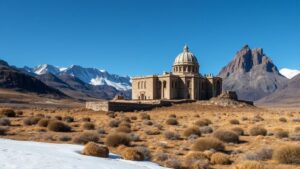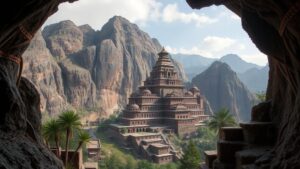Lost city discoveries near modern urban centers: the surprising proximity of history.
Lost City Discoveries Near Modern Urban Centers: The Surprising Proximity of History
The ongoing explorations and archaeological findings unveil the rich tapestry of human history, often revealing ancient cities within striking distances from contemporary urban centers. These discoveries not only enhance our understanding of past civilizations but also serve as reminders of the cultural legacies that continue to influence our modern world. This article examines remarkable instances of lost city discoveries near urban centers, highlighting their significance and the insights they provide into human history.
Syracuse, Italy: A Journey into Ancient Civilization
Syracuse, located on the eastern coast of Sicily, is a prime example of a city where ancient ruins lie adjacent to a bustling modern environment. Known for its rich history as a powerful city-state during Classical antiquity, Syracuse was once a key player in the Greek world.
Among the most notable finds is the Greek Theatre of Syracuse, built in the 5th century BCE. This impressive structure could seat over 15,000 spectators and is renowned for its exceptional acoustics. Today, the theatre hosts modern performances, bridging the gap between its ancient purpose and contemporary culture.
Teotihuacan, Mexico: Urban Echoes of a Lost Civilization
Just 30 miles northeast of Mexico City, the ancient city of Teotihuacan offers another striking example of forgotten history in the vicinity of a modern metropolis. Thriving between 1 CE and 700 CE, Teotihuacan was one of the largest cities in the world at the time, showcasing monumental architecture such as the Pyramid of the Sun and the Pyramid of the Moon.
Archaeologists have estimated that the city was home to over 100,000 inhabitants at its peak, with a sophisticated urban plan that included residential complexes, markets, and temples. Remarkably, the site continues to be a major tourist attraction, drawing millions every year to explore its vast ruins, while ongoing excavations frequently yield new artifacts. These discoveries not only enhance historical knowledge but also inspire pride among locals who recognize their connection to this ancient civilization.
Carthage, Tunisia: Layers of Cultural Heritage
Located just outside the modern capital of Tunis, the ancient city of Carthage was once a formidable rival to Rome, flourishing from roughly 814 BCE until its destruction in 146 BCE. ruins of Carthage, a UNESCO World Heritage Site, provide invaluable insights into the Punic civilization.
Notable features include the impressive Antonine Baths, one of the largest Roman bath complexes in the world, and the Tophet, a sacred burial site for children believed to have been sacrificed to the gods. Modern excavations continually uncover new findings, allowing historians to piece together the daily lives and rituals of its inhabitants. As the city merges its ancient past with the vibrancy of Tunis, visitors can experience a multifaceted historical narrative within moments of the contemporary urban scene.
The Significance of Modern Discoveries
The proximity of lost cities to modern urban centers carries profound implications for both archaeology and urban development. Here are some noteworthy impacts:
- Educational Opportunities: Close proximity allows for educational programs and archaeological tours that engage the public in the history of their surroundings.
- Preservation Awareness: Highlighting historical sites fosters a culture of conservation, emphasizing the importance of preserving cultural heritage in rapidly developing urban areas.
- Urban Planning Integration: Many cities are adopting practices that incorporate historical sites into urban planning, creating synergy between development and historical preservation.
Conclusion: Actionable Takeaways
The discoveries of lost cities near modern urban centers serve as significant reminders of the layers of history that exist beneath the surface of our contemporary lives. As urban sprawl continues to expand globally, the challenge lies in balancing development with the preservation of our shared heritage. Citizens and planners alike can take actionable steps by:
- Engaging with local history: Participate in community events, archaeological tours, or educational workshops aimed at preserving local heritage.
- Advocating for preservation: Support policies that promote the conservation of archaeological sites amidst urban development.
- Fostering sustainable tourism: Encourage responsible tourism practices that respect historical sites while benefiting local economies.
As urban centers continue to grow, acknowledging and preserving our historical roots becomes ever more critical in crafting a future that honors the past.


